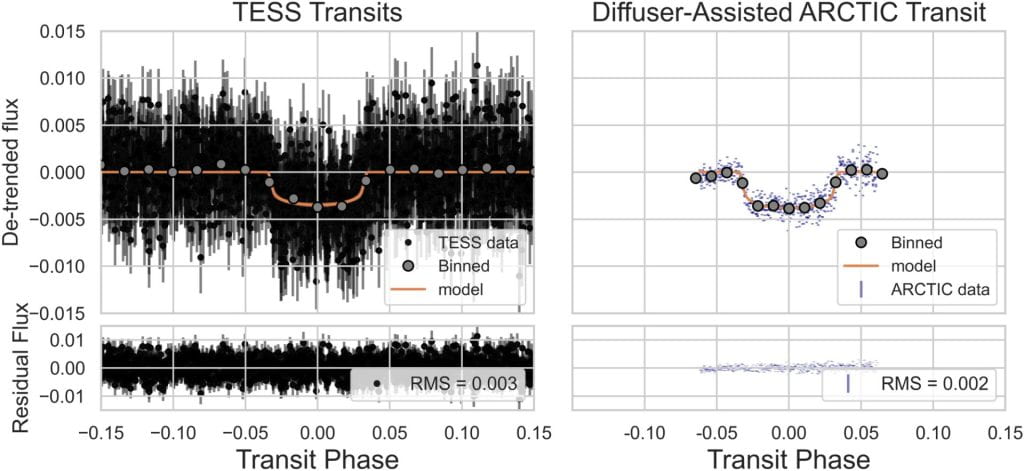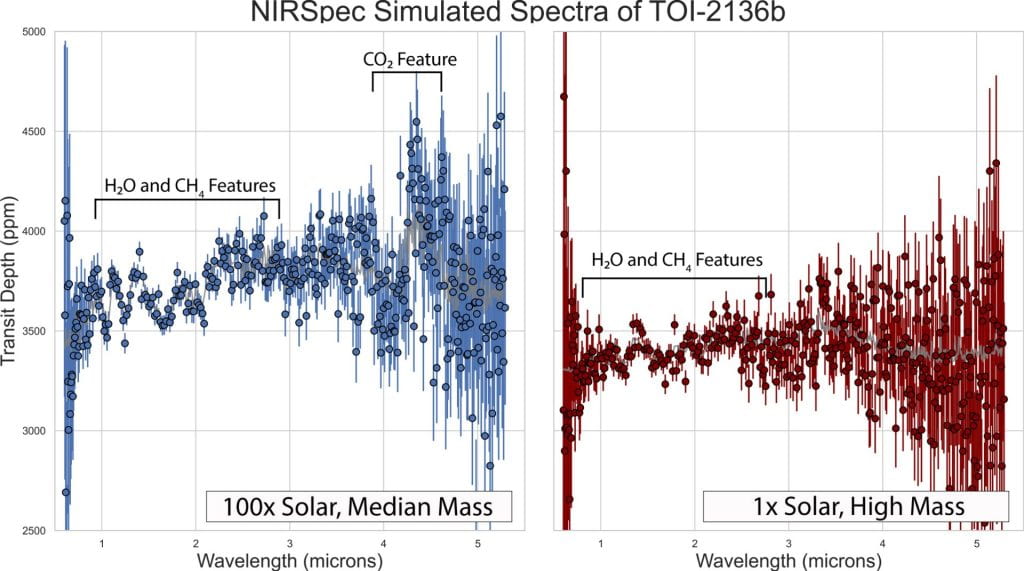Will Life on Other Planets Look Like Ours?
Finding life somewhere other than Earth would be a truly monumental discovery, but will we know it when we see it? For as long as astronomers have been studying the stars, they have imagined far off worlds, usually something like Earth. And that’s why exoplanet scientists covet the “Earth 2.0,” an exoplanet just like Earth, that may just house the life we have long sought. But that does not mean that scientists aren’t also thinking about and looking for life in unusual places…
TOI-2136b: Characterizing the Planet with HPF, TESS, and ARCTIC
Scientists working with HPF–led by Science Team member Corey Beard–have recently characterized the transiting exoplanet, TOI-2136b. First identified by the transiting exoplanet survey satellite (TESS), we then utilized the diffuser-assisted ARCTIC instrument to refine the size of TOI-2136b. We learned that it is a sub-Neptune, meaning that a huge part of the planet is a big, gaseous atmosphere, just like Neptune, but with a radius only twice as big as Earth. Using HPF, our group was able to constrain the planet mass by measuring the Doppler wobble of the system. As a result, we confirmed that this system is probably a gaseous, puffy planet, rather than a rocky planet like Earth.

Left: Transits of TOI-2136b observed with TESS. Right: Transit of TOI-2136b taken with the diffuser-assisted ARCTIC instrument. By measuring the brightness of a star every two minutes, we are able to identify periodic dips that suggest a planet is passing in front.
A Cold Haber World?
Even more fascinating, TOI-2136b just might have an environment amenable to an exotic kind of life we’ve never seen on Earth. Orbiting its star once every 7.8 days, TOI-2136b is a lot closer to its star than the Earth is to the Sun. Luckily, TOI-2136b’s host star is an M dwarf, a cooler, redder star than the Sun. As a result, the equilibrium temperature of TOI-2136b is “only” 129o C (265o F)… way too hot for humans to survive. However, because the planet is in a size regime where exoplanets most likely have large atmospheres of hydrogen and helium, the pressure beneath the atmosphere is likely to be very high: so high, in fact, that water–which would normally have boiled into steam–can be forced to stay in a liquid state. This is highly significant, as liquid water is essential for any currently known kind of life.
Scientists originally proposed the idea of a Cold Haber World in 2013, a unique environment where bacteria live inside of a planetary ocean surrounded by a thick gaseous atmosphere. On Earth, some industries use what we call the “Haber process” at extremely high temperatures to produce ammonia by combining H2 and N2. Bacteria on TOI-2136b could combine hydrogen and nitrogen from the atmosphere using this same Haber process, though the temperature would be lower in the planetary environment than in the lab on Earth (hence the use of the word “cold”). Much like photosynthesis on Earth, these bacteria would get energy from the process, making it an appealing way for bacteria to survive.
But so what? How would we ever know that this was happening? Well, it happens that TOI-2136b has the perfect properties to make it viable for biosignature searches. At only twice the size of Earth, TOI-2136b is large enough that it probably has a thick atmosphere of hydrogen and helium, but small enough (<3.75 Earth radii) that it can’t produce ammonia abiotically; that is, without the help of life. With a temperature of 129o C, the planet can have liquid water due to the high pressure of a thick atmosphere. And the cherry on top? This system is close enough to Earth that we could look at it with the James Webb Space Telescope (JWST), and actually figure out what its atmosphere is made of! As a part of our analysis, our team simulated what a JWST observation with NIRSPEC–one of the spectrometers on JWST–would look like, and the results are exciting. Clear molecular features from water, carbon dioxide, and methane are visible for any mass of the planet allowed by our HPF observations. Our simulations don’t include any ammonia lines, but that is because this planet shouldn’t be producing ammonia without any bacteria. So, if we observe this system and detect it, that would be compelling preliminary evidence that there is life on the planet, using this Haber process to create energy for itself.

By using our knowledge of chemistry and physics, we are able to simulate what a JWST NIRSPEC spectrum of TOI-2136b might look like. While the planet transits the star, its atmosphere absorbs some of the light. By looking at what colors are absorbed, we are able to determine which chemicals exist in the planet’s atmosphere.
While we haven’t detected any biosignatures yet on TOI-2136b, keep an eye out. Other groups are already working on studying this system more, and it has a lot of potential!

 RSS - Posts
RSS - Posts